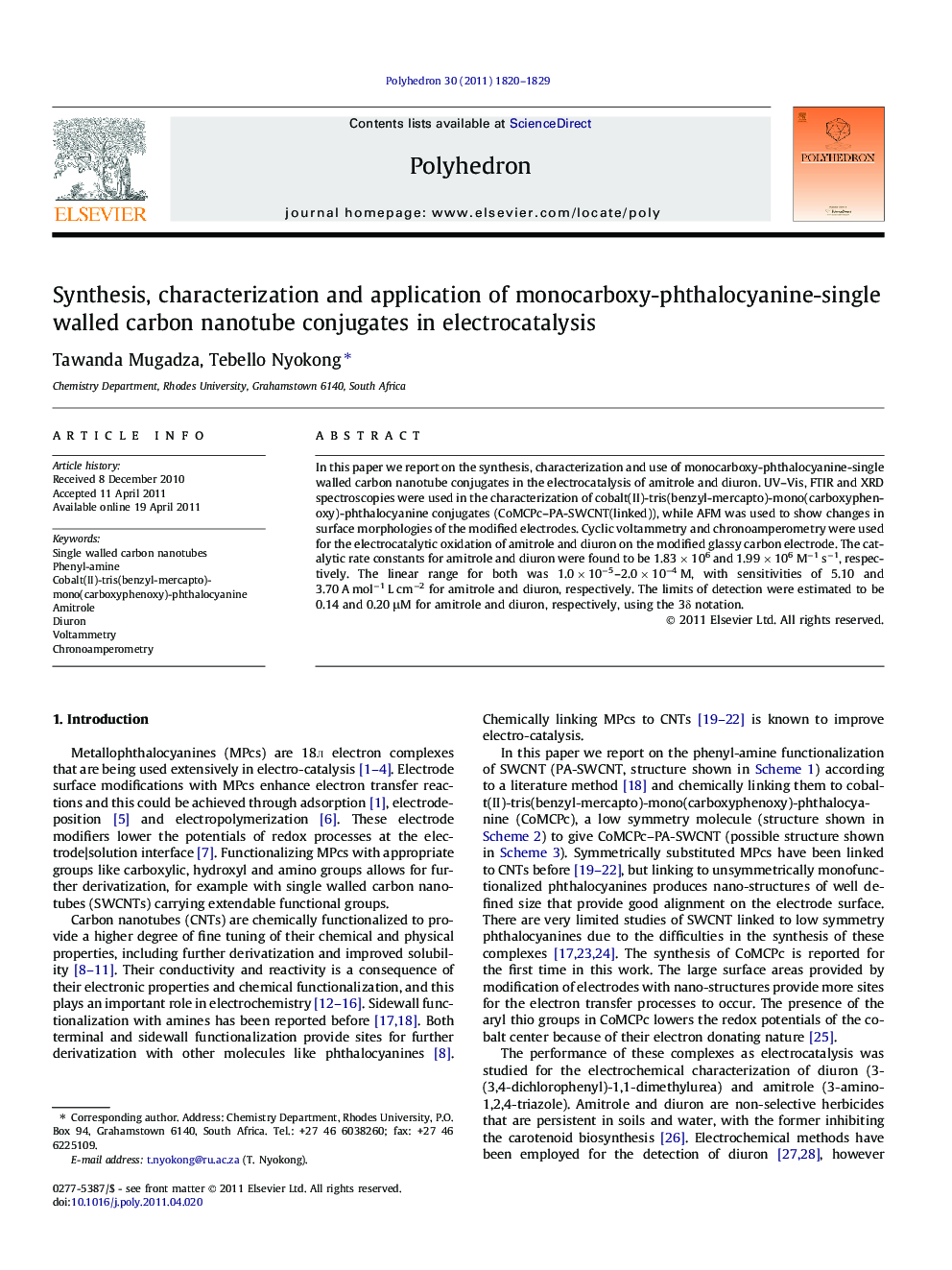| Article ID | Journal | Published Year | Pages | File Type |
|---|---|---|---|---|
| 1336080 | Polyhedron | 2011 | 10 Pages |
In this paper we report on the synthesis, characterization and use of monocarboxy-phthalocyanine-single walled carbon nanotube conjugates in the electrocatalysis of amitrole and diuron. UV–Vis, FTIR and XRD spectroscopies were used in the characterization of cobalt(II)-tris(benzyl-mercapto)-mono(carboxyphenoxy)-phthalocyanine conjugates (CoMCPc–PA-SWCNT(linked)), while AFM was used to show changes in surface morphologies of the modified electrodes. Cyclic voltammetry and chronoamperometry were used for the electrocatalytic oxidation of amitrole and diuron on the modified glassy carbon electrode. The catalytic rate constants for amitrole and diuron were found to be 1.83 × 106 and 1.99 × 106 M−1 s−1, respectively. The linear range for both was 1.0 × 10−5–2.0 × 10−4 M, with sensitivities of 5.10 and 3.70 A mol−1 L cm−2 for amitrole and diuron, respectively. The limits of detection were estimated to be 0.14 and 0.20 μM for amitrole and diuron, respectively, using the 3δ notation.
Graphical abstractMonocarboxy-phthalocyanine phthalocyanines containing arylthio substituents was synthesized and attached to single walled carbon nanotubes then used in the electrocatalysis of amitrole and diuron.Figure optionsDownload full-size imageDownload as PowerPoint slideHighlights► Cobalt-tris(benzyl-mercapto)-mono(carboxyphenoxy)-phthalocyanine is synthesized. ► The synthesized complex is linked to single walled carbon nanotubes to form conjugates. ► The conjugates are used for the electrocatalytic oxidation of diuron and amitrole. ► AFM was used to show changes in surface morphologies of the modified electrodes.
